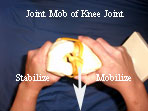|
PT Classroom - When Exercises Aren't Enough ׀ by Eric Mason, PT |

Eric Mason, PT, graduated from the Manchester Royal Infirmary School of Physiotherapy and Victoria University of Manchester, UK in 1992. He has gained his clinical experience in both the UK and the United States. He is a Florida Licensed Physical Therapist and a member of the American Physical Therapy Association and the Chartered Society of Physiotherapy UK. He worked as a Senior Physiotherapist in Rakehead House, a nationally renowned neurological rehabilitation unit in the UK. He was Director of Physical Therapy for Comprehensive Rehabilitation Services, Inc in Southwest Florida, before moving to Orlando where he developed the Physical Therapy program at the Center for Massage & Clinical Therapy, before opening Physiotherapy Works, LLC in August 2004. He is currently enrolled in the Doctorate program at the University of St. Augustine for Health Sciences. |
|
When Exercises Aren't Enough
Following injury or surgery, exercise is often prescribed
to rehabilitate patients to their previous level of
functional independence. Much emphasis is placed on exercise
as a treatment modality because it creates physical
improvements and has wide-ranging psychological benefits to
our patients. Exercise restores strength in muscles,
flexibility in tissues and range of motion in joints. Many
times, exercise can help restore proper muscle balance
around the joints. However, it may not be enough to restore
proper joint
mechanics. |
|
|
|
|







